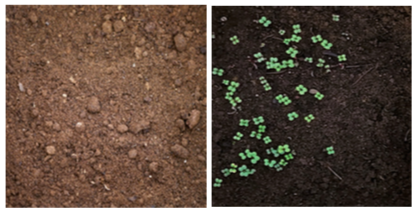Ecological aspects of sorbents use to improve the efficiency of bioremediation on oil-contaminated lands

Published 2021-06-28
Keywords
- Environment,
- Bioremediation,
- Oil spill,
- Sorbent,
- Contaminated soil
- Biodestruction,
- Petroleum Industry ...More
How to Cite
Copyright (c) 2021 Universidad Industrial de Santander

This work is licensed under a Creative Commons Attribution 4.0 International License.
Abstract
Nowadays, polluted soils are one of the primary environmental problems. Due to a large number of oil- contaminated lands, new methods are being developed more and more actively, as well as a combination of various existing methods for disposing of oil spills. In this paper, bioremediation with the use of adsorption is considered to reduce toxicity and accelerate the processes of microbial destruction of hydrocarbons. There is a large selection of sorbents based on carbon, mineral, and natural materials. The effectiveness of a particular sorbent will vary depending on the application region, weather and climate conditions, soil type, and the type and properties of the oil. In this work, peat was tested as an organic sorbent (S1), vermiculite as a mineral sorbent (S2), and sorbent based on carbon (S3). The sorbents were added to the soils contaminated by oil, evaluating the pH, humidity, and phytotoxicity of the soils. The results showed that the soils treated with sorbents maintained the neutral pH, increased the humidity, and decreased the phytotoxicity of the soil. The sorbent efficiency was S3> S2> S1.
Downloads
References
Akovetsky, V. G. (2020). ). Geoecological aspects of the technologies applied for construction and recultivation of sludge pits when performing drilling operations. Environmental protection in the oil and gas industry(5), 5-11.
Akovetsky, V. G. (2020). Geological problems of oil and gas complex and ways of their solutions. Environmental protection in the oil and gas industry(4), 7-14.
Antizar-Ladislao, B., Lopez-Real, J., & Beck , A. (2004). Bioremediation of polycyclic aromatic hydrocarbon (PAH)-contaminated waste using composting approaches. Environmental Science and Technology, 34(3), 249-289.
Antizar-Ladislao, B., Lopez-Real, J., & Beck, A. J. (2005). In-vessel composting–bioremediation of aged coal tar soil: effect of temperature and soil/green waste amendment ratio. Environment International, 31(2), 173-178.
Artyukh, E. A., Mazur, A. S., Ukraintseva, T. V., & Kostyuk, L. V. (2014). Prospects for the use of biosorbents for cleaning reservoirs during the elimination of emergency oil spills. Saint Petersburg.
Ellis, M. M., Ivan, J. S., Tucker, J. M., Schwartz, M. K., & Ellis et al. (2015). Methods in Ecology and Evolution. США.
Elssaidi, M. A., & ALSHEBANI, A. K. (2012). Bio- Remediation of Contaminated Soils with Petroleum Hydrocarbons and their Suitable Environmental and Biological Conditions. Environmental and Biological Sciences, 1(1), 13-14.
Gaur, N., Narasimhulu, K., & PydiSetty, Y. (2018). Recent advances in the bio-remediation of persistent organic pollutants and its effect on environment. Journal of cleaner production, 198, 1602-1631.
Kondrashina, V. S., Strijakova, E. R., Zinnatshina, L. V., Bocharnikova, E. A., & Vasilyeva , G. K. (2018). Influence of activated carbon and other additives on bioremediation rate and characteristics of petroleum-contaminated soils. Soil Science (Special Issue), 183(4), 150-158.
Mikhedova, E. E. (2020). Application of biopreparats to solve the problems of oil pollution remediation of soil cover. Environmental protection in the oil and gas industry(4), 10-14.
Mohan, S. V., Kisa, T., Ohkuma , T., Kanaly, R. A., & Shimizu, Y. (2006). Bioremediation technologies for treatment of PAH-contaminated soil and strategies to enhance process efficiency. Environmental Science and Bio/Technology, 5(4), 347-374.
Vasilyeva, G., Kondrashina, V., Strijakova, E., & Ortega Calvo, J. J. (2019). Adsorptive bioremediation of soil highly contaminated with crude oil. Science of the Total Environment. doi: https://doi.org/10.1016/j.scitotenv.2019.135739
Zinnatshina, L. V., Strijakova, E. R., Danshina, A. V., & Vasilyeva, G. K. (2018). Influence of sorbents on the rate of bioremediation and properties of soil contaminated with a mixture of petroleum products. Natural and technical Sciences(9), 24-30.